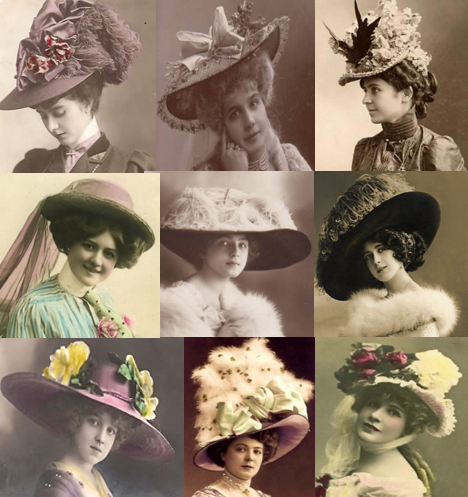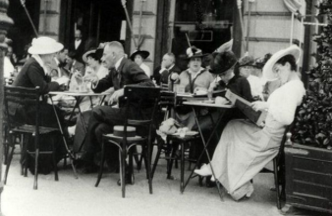The Symbolization of Women’s Hat in the Early 20th century
- Yvonne Lee
- Jun 4, 2020
- 2 min read
Photo by Music of Eric Coates (2006)
Since the beginning of history, a hat has been in vogue consistently until today. The hat is the best item to represent the wearers’ social status and characteristics because a hat is worn on the topmost part of the body. Furthermore, the meaning of the hat is the most prominent symbol of fashion functionally and culturally. Various theorists and critical thinkers for the artifacts have explored the definite symbolic meaning and embedded messages, such as social status and culture in material culture study. Historically, the hats, perhaps unwittingly, exposes the effect between ornament and function in social behavior (Ross, 1990).
Initially, the function of a hat is several aspects not only to protect against hot or cold, such as rain or sun but also to highlight people’s dress as a decoration, such as accessories. However, in the early 20th century, the hat was not just ornament or functional aspect but symbolic meaning as a ‘vehicle for manifestation’ to assess historically and culturally significant social status. Moreover, a hat was a critical signifies to express symbolic meaning that is malleable such as different people in different social contexts who during the 20th century experienced culture, social, and political effects in the early 20th century (Tolini, 2002).
Women Fashion Style in The Early 20th Century
Historically, in the early 20th century, there was a time of change in many ways. While the society had been rapid technological and economic changes made it inevitable that women started entering the workforce and attended to social activities. Thus, women gained equal rights with men, such as better working conditions, increasing wages, seeking higher education, and demanding the right to vote (Lee. n.d.).
Moreover, fashion mood had been the golden age also began to challenge new influences and changing society from the Edwardian era in terms of the social, cultural, and political aspects. The fashion style began to emerge the revolution that evolutionary in bridging the gap between the rigid formality of the Edwardian styles and the last changes in 1905 and 1918 (Crane, 2012).
Hat Designed by Esther Meyer (1905-1910)
Changes in technology, leisure, works, cultural, and moral values have been analyzed influences of the women's fashion mood in that era. By changing society and politics, a hat also contributed to the fashion trends, which in turn influence what kind of dress code they were proper to wear (Crane, 2012). A hat has many meanings of material culture study in terms of a functional, aesthetic, social aspect, and that was a key to understanding from the past to the present. Moreover, a hat was influenced by the fashion style of western women in the period 1900-1909; also, it is represented the authentic meanings to understand the certain era today educationally.
Resources
Crane, D. (2012). Fashion and its social agendas: Class, gender, and identity in clothing. University of Chicago Press.
Ross, R. (1990). The top‐hat in South African history: The changing significance of an article of material culture. Social Dynamics, 16(1), 90-100.
Tolini, M. (2002). " Beetle Abominations" and Birds on Bonnets: Zoological Fantasy in Late-Nineteenth-Century Dress. Nineteenth-Century Art Worldwide, 1(1).
The lives of women in the early 1900s (Lee. n.d.): http://peopleof.oureverydaylife.com/lives-women-early-1900s-9057.html
Fashion and Textiles: https://madparis.fr/en/about-us/collections/nouvelle-traduction-20-mode-et
1900s women’s fashion (2016): http://www.blue17.co.uk/1900s-womens-fashion/



















Comments